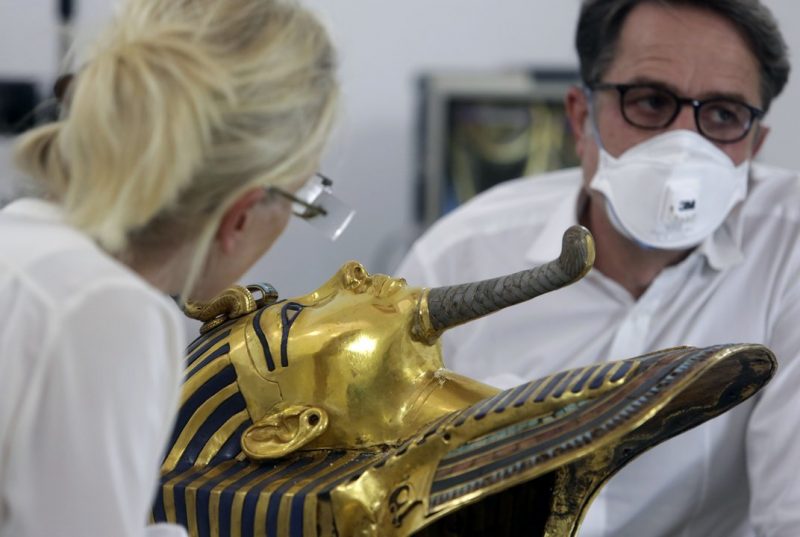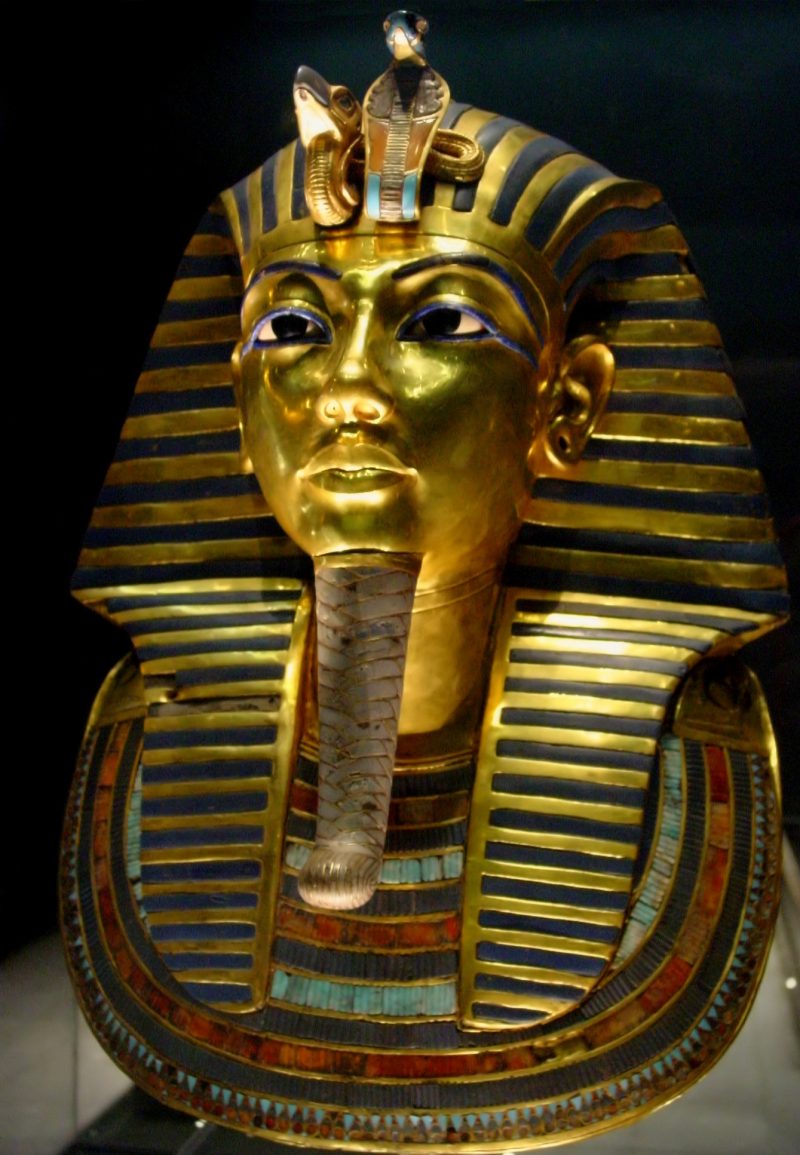Imagine yourself working at the Egyptian Museum in Cairo and while doing some maintenance around “the most famous archaeological relic in the world”, King Tut’s 3,300-year-old funeral mask, you suddenly break a piece of it… This is probably one the worst days at work you can have!
This actually happened in August 2014 while three conservators employed at the museum were cleaning the protective casing where the mask was exhibited. At some point, one of them managed to knock off the gold and blue woven beard of young King Tut.
All of the three conservators gave a different account of the events. That was probably expected. Who wants to be linked with an accident like this? Struck by panic, instead of taking it to the conservation lab, one of the workers decided to glue it back with epoxy and put the mask back on display. Unfortunately epoxy is a very adhesive material that was not really suitable for a delicate object like Tuts death mask.

When one of his other colleagues realised what happened, everything went from bad to worse. He grabbed a spatula and tried to remove the glue, doing even more damage. They left the mask with permanent scratches. There is also a gap between the beard and the face and a layer of transparent yellow (probably from the glue). Good work guys!
Katja Broschat and Christian Eckmann, two german glass and metal restoration specialists are now repairing the damage on the mask, together with a team from the Cairo Museum. They will carefully remove the beard first, before attaching it properly. The work will probably take 2-3 months. Christian Eckmann, the lead restoration specialist, stated the following on a news conference:
“We have some uncertainties now. We don’t know how deep the glue went inside the beard. And so we don’t know how long it will take to remove the beard.”

About the method of removing the glue from the bad repair, Eckmann said:
“We try to make all the work by mechanical means … we use wooden sticks which work quite well at the moment. Then there is another strategy we could implement, slightly warming up the glue. It’s unfortunately epoxy resin, which is not soluble.”
During the restoration, they will conduct a detailed study of the mask’s ancient manufacture technique. A research like this was not done previously and this is a nice opportunity to determine the materials and techniques used when the mask was made.
Tutankhamun was an Egyptian pharaoh of the 18th dynasty (ruled ca. 1332–1323 BC), during the period of Egyptian history known as the New Kingdom. His tomb was discovered in 1922 by two British archaeologists. The discovery triggered big worldwide interest in ancient Egypt and archaeology. King Tutankhamun’s burial mask in Cairo Museum is a popular symbol of Egyptian culture and history.
Source: washingtonpost, tweentribune, wikipedia,
